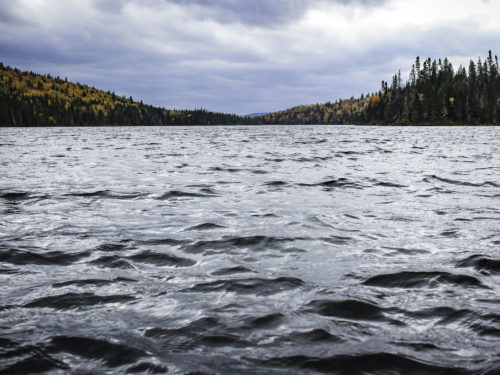

About us
Chair for Research on Exploited Aquatic Species
The CREAE aims to acquire new knowledge on sport fish species to ensure the sound management of wildlife resources.
It aims to develop and improve tools for managing fish stocks to optimize wildlife exploitation for the benefit of users while ensuring the sustainability of the resource for future generations.
A unique model
CREAE is a unique model of scientific and financial partnership in Quebec between the Ministère de l’Environnement, de la Lutte contre les changements climatiques, de la Faune et des Parcs (MELCCFP) and the academic world. It provides a solid scientific basis for wildlife resource management while consolidating a niche of academic excellence that contributes to training a capable and skilled next generation to benefit Quebec’s fishermen and women.
Towards the predictive management of fishery resources
The ultimate goal of the CREAE research program is to move towards the predictive management of Quebec sport fish stocks.
Achieving this goal requires advancing scientific knowledge hand in hand with its integration into management methods. Predictive management will therefore be achieved by improving the scientific knowledge of Quebec fish species and applying these new concepts to their management.

CREAE scientific committee
Its role
The scientific committee sets out the Chair’s directions, scientific programming and opportunities. Its mandate is to determine and evaluate the Chair’s priority activities, taking into account the expertise of CREAE researchers and the needs of the MELCCFP, to foster the creation of scientific and financial partnerships and optimize the transfer of research results to users.
Members
In addition to the director and the two CREAE co-directors, the scientific committee comprises five representatives of the MELCCFP:
- Julie Deschênes, Direction de la gestion de la faune de l’Outaouais
- Karine Gagnon, Direction de la gestion de la faune du Saguenay–Lac-Saint-Jean
- Frédéric Lecomte, Direction de l’expertise sur la faune aquatique
- Yves Paradis, Direction de l’expertise sur la faune aquatique
- Rémy Pouliot, Direction de l’expertise sur la faune aquatique
Since CREAE began operations in 2010, it has conducted a wide range of research activities across Quebec!
- Temporal evolution of brook trout exploitation in Quebec
- Ecology of young striped bass in the St. Lawrence River
- Impacts of lake trout and brook trout stocking
- Origin of striped bass caught in the Gaspésie
- Alternatives to live bait fish for winter fishing
- Carrying capacity of Lac Saint-Jean for rainbow smelt
- And much more…





